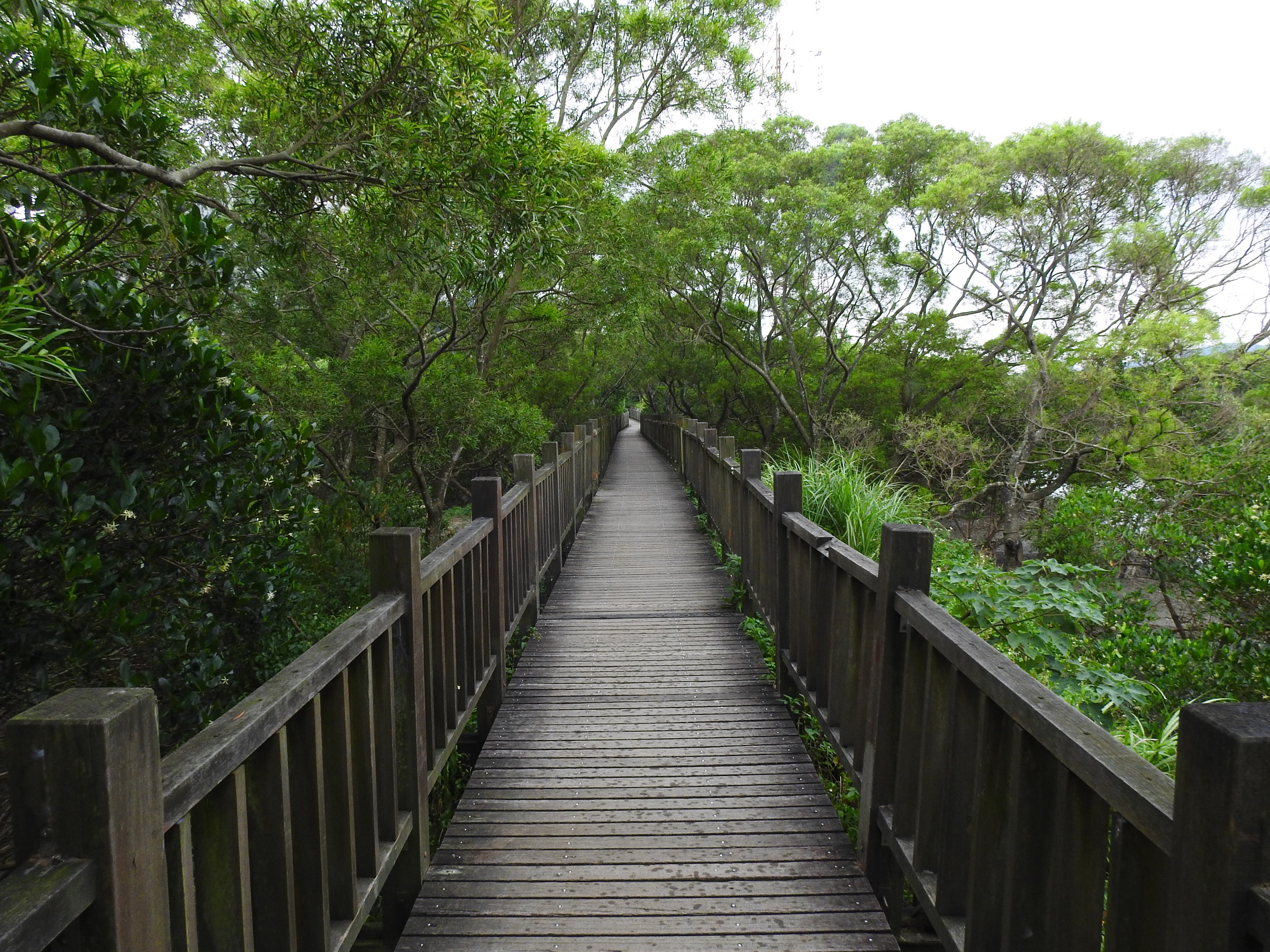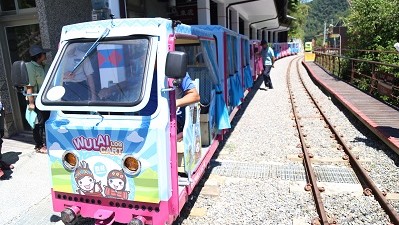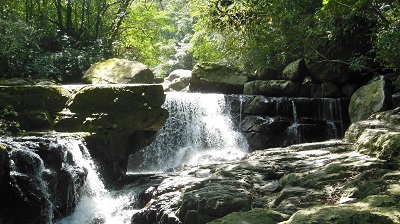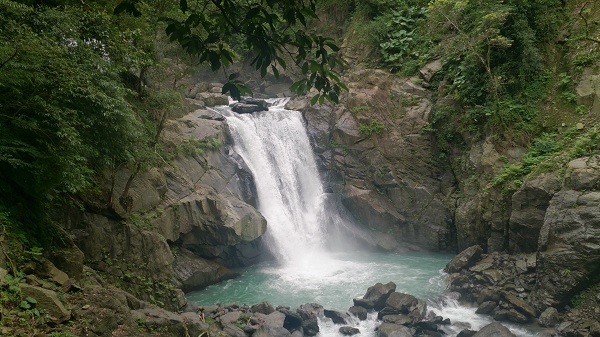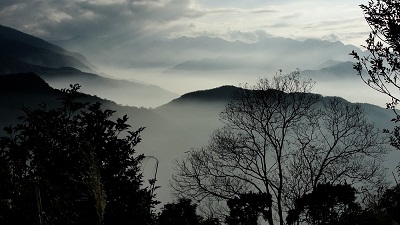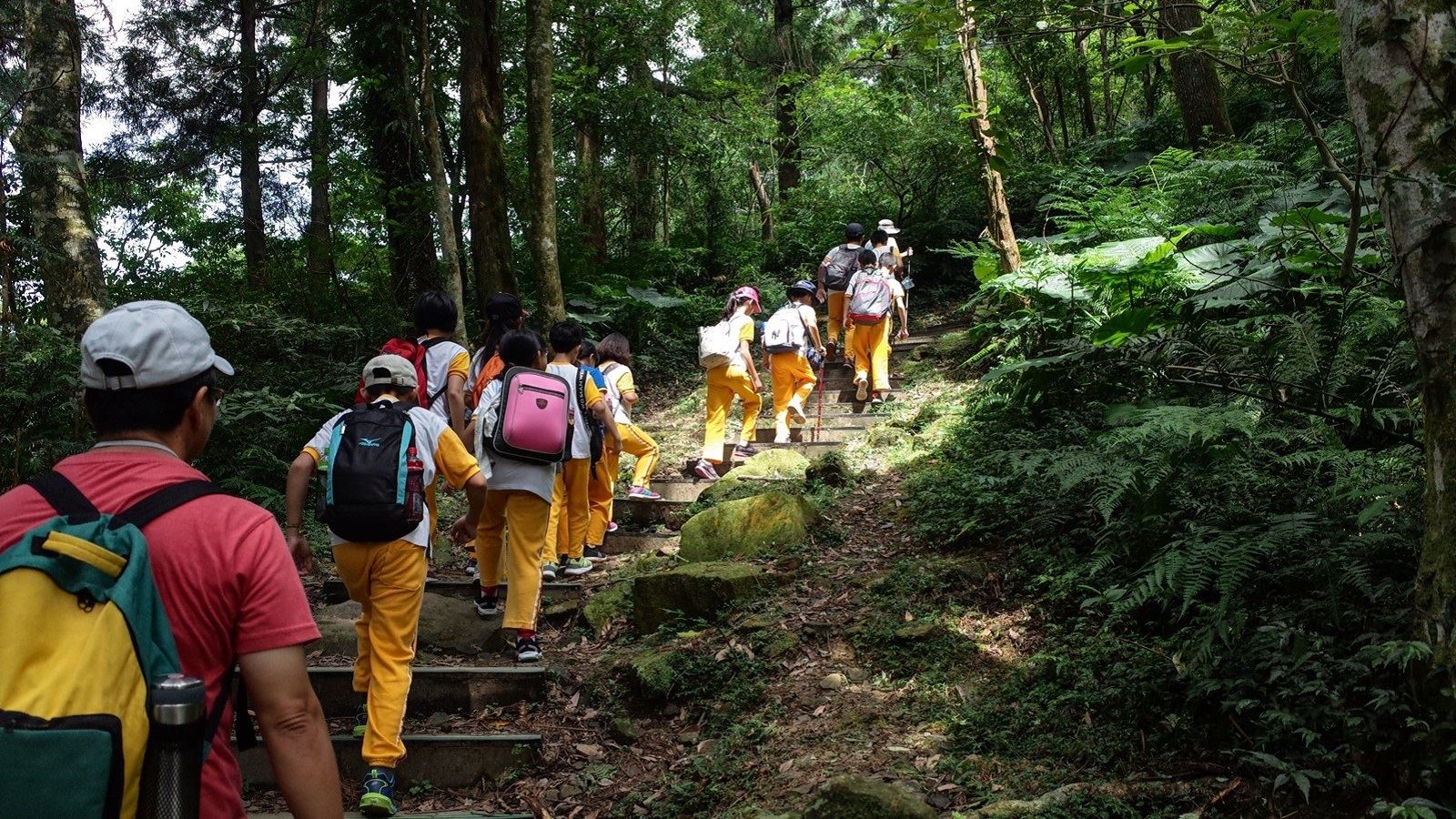Tamsui District, New Taipei City
Mangrove Ecocenter
The Mangrove Ecocenter is small but beautiful. Inside the ecocenter, there are still displays and a multimedia space. We use pictures, posters, lightboxes and many other audio-visual tools to introduce the star species of the mangrove-- kandelia, as well as the ecosystems of fiddler crabs, mudskippers and water birds. In addition, there is an observatory in which you can observe the reserve at a close distance. Through the observatory window with excellent views, you can see the spectacular mangrove, Tamsui River, Guanyin Mountain, and bright red Guandu Bridge.
Weather Forecast
|
09.16
Thur.
|
09.17
Fri.
|
09.18
Sat.
|
09.19
Sun.
|
09.20
Mon.
|
09.21
Tue.
|
09.22
Wed.
|
|
|---|---|---|---|---|---|---|---|
| Temperature |
27 ° / 31 °
|
27 ° / 31 °
|
26 ° / 32 °
|
27 ° / 33 °
|
27 ° / 33 °
|
27 ° / 33 °
|
27 ° / 33 °
|
| Feel like | 32 ° / 37 ° | 30 ° / 38 ° | 30 ° / 37 ° | 30 ° / 37 ° | 31 ° / 38 ° | 31 ° / 38 ° | 31 ° / 38 ° |
|
Probability of Precipitation |
10 % | 30 % | 30 % | - | - | - | - |
| Relative Humidity | 81 % | 82 % | 82 % | 79 % | 80 % | 77 % | 78 % |
|
Wind speed Wind direction |
2
N
|
2
W
|
2
SW
|
2
SW
|
3
SW
|
2
SW
|
3
NW
|
| UVI |
8
Very High
|
6
High
|
8
Very High
|
10
Very High
|
9
Very High
|
9
Very High
|
9
Very High
|
|
Sunrise Sunset |
|
|
|
|
|
|
|
Central Weather Bureau|Update Time:2021/09/16 11:17
Travel Information
線上申請
點擊前往
Opening Hours
Tuesday to Sunday 10:00 to 17:00, closed on Monday
The outsourcing of the "Mangrove Ecological Education Center" has been completed and is now operated by Hosifenna Co., Ltd. If you have any other questions about the service hours, please call Hosifenna Co., Ltd.
The outsourcing of the "Mangrove Ecological Education Center" has been completed and is now operated by Hosifenna Co., Ltd. If you have any other questions about the service hours, please call Hosifenna Co., Ltd.
Transportation
Map
Mangrove Ecocenter
2F., No.68, Sec. 2, Zhongzheng E. Rd., Tamsui Dist., New Taipei City Google Map
2F., No.68, Sec. 2, Zhongzheng E. Rd., Tamsui Dist., New Taipei City Google Map

Route 1
Get off the National Highway No. 1 at Wugu exit, go northbound on Xin 5th Rd., to Chengtai Rd. and through Guandu Bridge to Minquan Rd. → Zhongzheng E. Rd. Sec. 2 → Mangrove Ecocenter
Route 2
Get off the National Highway No. 1 from Taipei IC (Chongqing N. Rd.) to Congqing N. Rd., through Bailing Bridge to Chengde Rd. and Dadu Rd. → Guandu Bridge → Minquan Rd. → Zhongzheng E. Rd. Sec. 2 → Mangrove Ecocenter.
By bus: Get off at Hongshulin MRT Station
【308 Tamkang University-Jiantan Station】【756 Tamkang University-Beimen】【818 St. John's Institute of Technology-Hongshulin Station (suspended during winter and summer vacations)】【821 Sanzhi-MRT Zhishan Station】 【837 Xinchun Street-Fudeli】 【857 Tamhai-Banqiao】【864 Sanzhi-Jiantan Station】【878 Tamsui Station-Bali】【879 Sanzhi-Guandu】【880 Tamsui-Shulin】【882 Sanzhi-Hongshulin Station】【883 Tamsui-Shulin-Tanhai】【892 Shimen-Beimen】【893 Beixinzhuang-Taipei】【Tanmai MRT Pilot Bus: Tamhai New Town-Guandu Station】【F107 Ganzhen-Fudeli】【F108 Ganzhen-Zhuweili】【1504 Tamhai-Beimen】【1505 Tamhai-Zhonghe】【Red 23 Fisherman's Wharf-Zhuwei Station】【Red 52 Tamhai New Town-HongshulinStation】
By MRT
Exit 2 of MRT Hongshulin Station of Tamsui Line.
Park Information
| No. | Park Information |
|---|---|
| 1. | The Tamsui River Mangrove Nature Reserve is a nature reserve established by the Ministry of Agriculture, Executive Yuan, in accordance with Article 84 of the Cultural Heritage Preservation Act to ensure the sustainable survival of the mangroves. Picking, felling, digging or other forms of damage are strictly prohibited. Violators will be sentenced to fixed-term imprisonment of not less than six months and not more than five years, and may also be fined not less than NT$500,000 and not more than NT$20 million. |
| 2. | Nature reserves are established to protect unique ecosystems, endangered species or geological landscapes, preserve gene banks, provide opportunities for ecological research, and serve as venues for environmental education and training. Therefore, general tourists who are not seeking academic research or education are not allowed to enter, and they do not have general sightseeing and recreational functions. |
| 3. | Leave nothing but footprints; take nothing but images. |
Travel Guide
Attraction
Map

Featured Landscape
Landscape window
Source 宜蘭分署
There is a large landscape window at the back of the museum. The first thing that catches your eye is a large area of Kandelia. Looking along the mouth of the Tamsui River, you can see Tamsui Old Street, Fisherman's Wharf, and the beautiful Guanyin Mountain Range and Taipei Port on the other side of the Tamsui River, allowing tourists to easily appreciate the beautiful scenery of the Tamsui River.
Service Facilities
Map

Park Facilities
Exhibition hall entrance and service desk
Source 宜蘭分署
When you enter the Mangrove Ecological Education Center, the first thing that comes into view is the spacious gate and the tourist information center. Ramps for the disabled are set up inside and outside the museum to make it easier for disabled visitors to integrate into the museum environment. The Mangrove Ecological Education Center is located at a key transportation hub for scenic spots in the Tamsui area. It provides tourists with high-quality introductions to scenic spots, ecotourism, and exhibitions at the Mangrove Ecological Education Center, allowing tourists to more conveniently learn about the rich ecological resources around them. We also hope that tourists can go there to experience it for themselves, build awareness of land identity, and jointly protect the natural ecology. To explore the mangrove ecosystem, start from the Mangrove Ecology Education Hall.

Park Facilities
Mangrove Boardwalk
Source 宜蘭分署
The wooden boardwalk built along the edge of the mangrove ecological reserve is an important site for planning and integrating environmental ecology and educational resources. Strolling along the quiet mangrove ecological trail allows tourists or local people to experience the ecological beauty of the forest and the dynamic and static creatures under the forest. The Mangrove Ecological Education Center, which has various diverse contents, hopes that the public will be inspired to care about the environment during their visit to nature, and then participate in nature protection actions to achieve sustainable management of natural ecology.

Restaurant/Accommodation/Meeting Room
Multimedia Room
Source 宜蘭分署
Another planned space in the museum is the audio-visual room, which has seats for 50 people and provides scheduled broadcasting of videos on forest ecology and related environmental education topics. In the future, it will also be planned to provide relevant units with use for arts and culture, community connection activities and seminars.
場館介紹
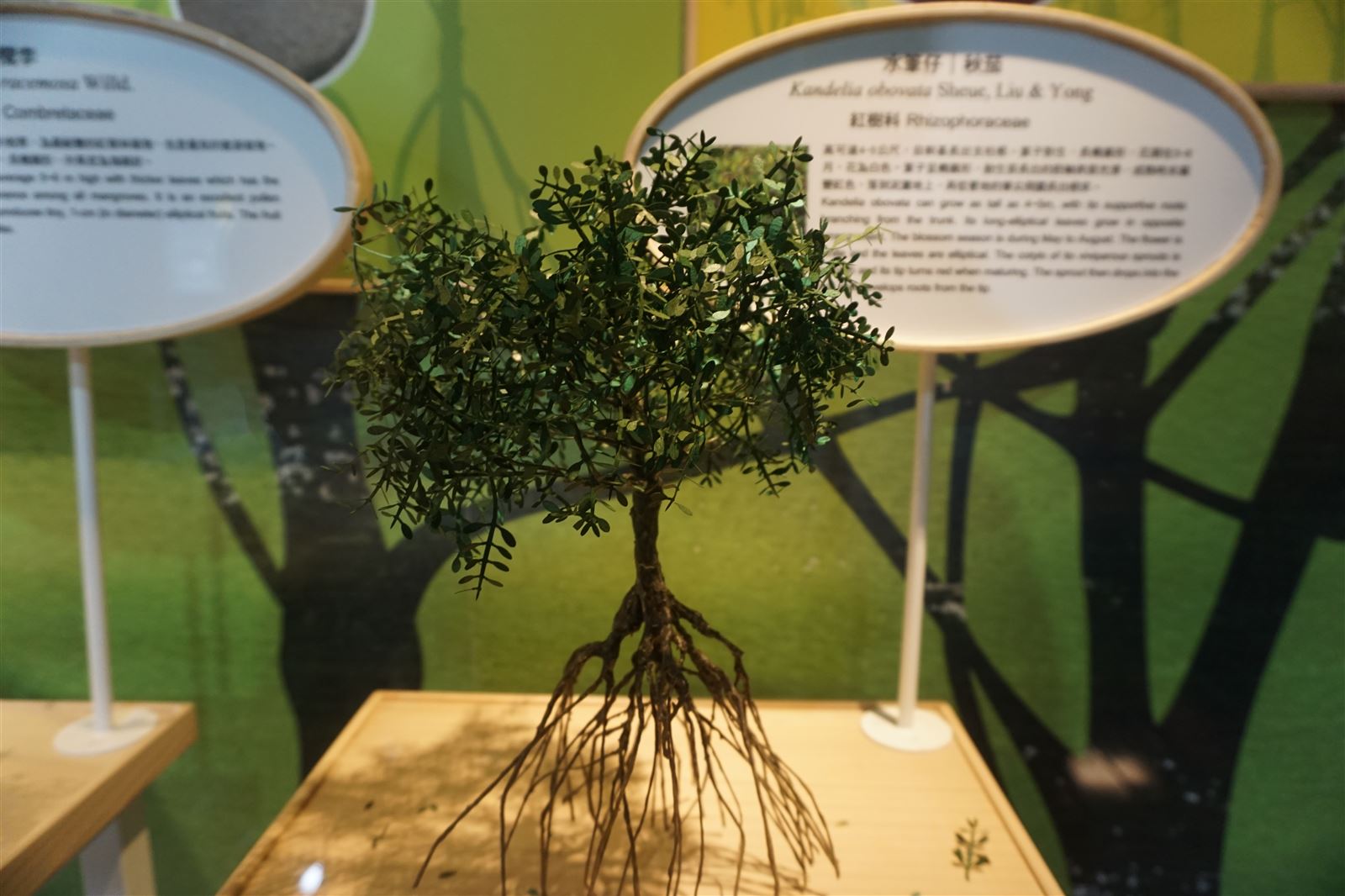
Source 宜蘭分署
1F
I love mangroves
This area introduces the history of the Tamsui River Mangrove Nature Reserve. In 1986, the Ministry of Agriculture announced this area as a nature reserve in accordance with the "Cultural Heritage Preservation Law", with an area of 76 hectares. The protected objects include the Kandelia forest and the various creatures distributed in it. In addition, the economic and non-economic benefits of mangroves are explained, and it is introduced that in addition to having a natural and rich biodiversity environment, mangroves have many other functions, including ecological conservation, bank protection and flood prevention, water storage and purification, economic production, education and recreation.
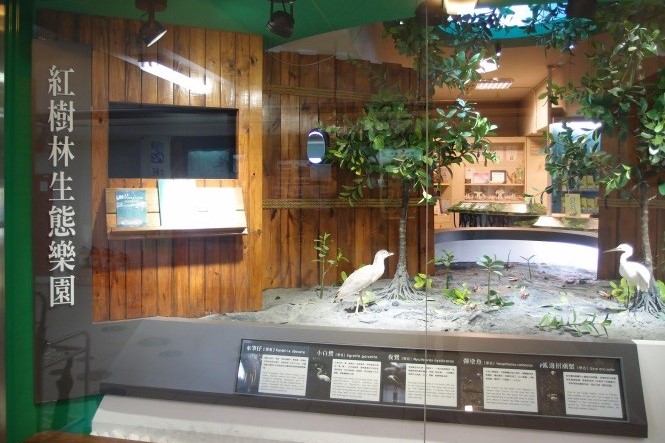
Source 宜蘭分署
1F
Mangrove ecological model
Models are used to represent common organisms in the mangrove forest ecosystem and the ecology of the Kandelia. Through the display of the models, visitors can understand the growth changes of the Kandelia and the appearance of common organisms such as arc-edge fiddler crabs, mudskippers, and little egrets. And by watching the TV videos, you can see the cute shapes and foraging lives of fiddler crabs and mudskippers in the mangrove area, as if you have become a part of them.

Source 宜蘭分署
1F
The story of Water Pen
The window display space introduces the life of Kandelia (flowering→fruiting→growth of viviparous seedlings→maturation and fall of viviparous seedlings), the natural enemies of Kandelia, and a model of the underground root growth of Kandelia viviparous seedlings after they fall to the ground. Through illustrations and model displays, visitors can further understand the growth method and ecology of Kandelia.
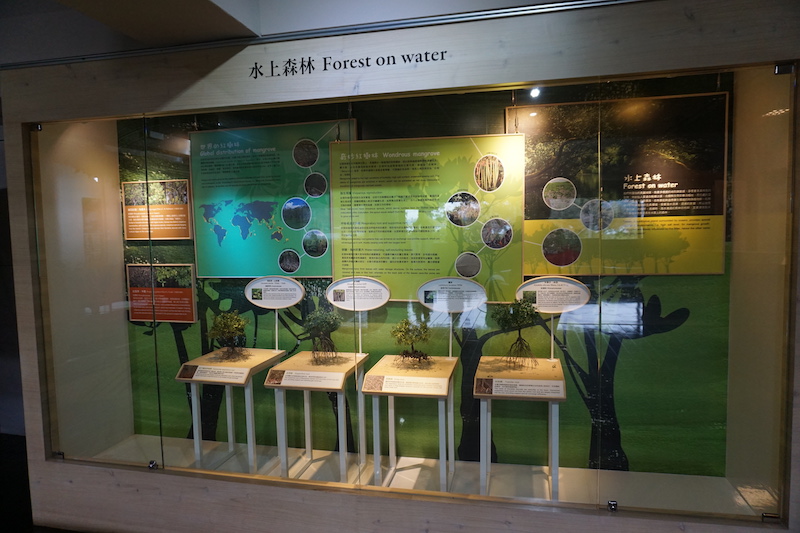
Source 宜蘭分署
1F
Water Forest
The window display space mainly introduces the world's mangrove species and Taiwan's mangrove species. Through the display of the glass window, visitors can understand the origin of mangroves and the four existing mangrove species in Taiwan. Through the Chinese-English bilingual text description on the backboard, domestic and foreign tourists can learn about the distribution of mangroves in the world and appreciate photos of the water forests in the southern region. Through visual transmission, visitors feel as if they are in a mangrove environment, wandering in a water forest.
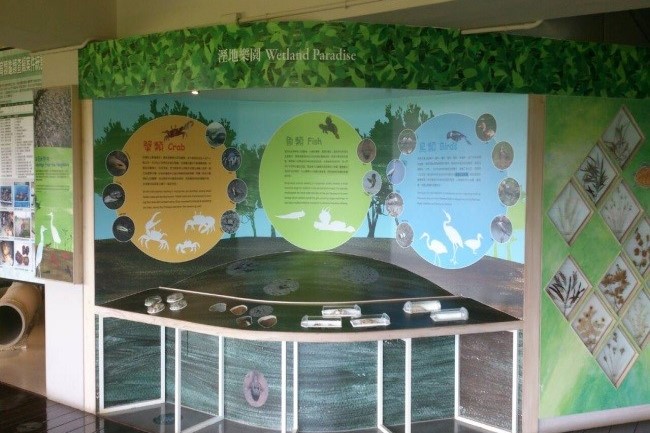
Source 宜蘭分署
1F
Wetland Park
Introduce the common crabs, fish and birds in mangroves. By using specimens and photos of crabs, snails, shellfish, fish and plants on display, coupled with high-quality guided tours, visitors can better understand the morphology and habits of these creatures and participate in actions to protect nature.
Nearby Attractions
